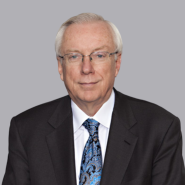NCE Status Now Limited Active Moieties
- May 4, 2021
- Article
Associated People
Associated Technologies
On April 23 President Biden signed into law changes narrowing the scope of eligibility for the non-patent “new chemical entity” (NCE) 5-year exclusivity provisions of 21 U.S.C. §301 et seq. The 5-year exclusivity comprises a 4-year data exclusivity provision during which time a generic applicant cannot rely on the drug application to establish either safety or efficacy which is followed by a 1-year marketing exclusivity. The exclusivity provision found in 21 U.S.C. § 355 (c)(3)(E)(ii) prior to the amendment described the NCE as applying to a drug where “no active ingredient” has been previously approved under § 355. Active ingredient is defined in 21 § 314.3(b) as “any component that is intended to furnish pharmacological activity or other direct effect in the diagnosis, cure, mitigation, treatment, or prevention of disease ….” Some drugs become active only after being metabolized to what is called the active moiety. Prodrugs are an example of this phenomenon. Under the prior definition both a prodrug which metabolized into the active drug and the metabolite might each be capable of receiving separate NCE status.
The FDA previously tried to limit NCE status on some occasions to the active moiety, but the courts disagreed and imposed the broader definition claiming the FDA was conflating the definitions of active moiety (the molecule or ion, … responsible for the physiological or pharmacological action of the drug substance) and active ingredient. The amendment now limits NCE to the active moiety.
The amendment changed the “active ingredient” throughout the provision to “active moiety” as defined in 21 C.F.R. 314.3(b). Active moiety is defined as “the molecule or ion, …, responsible for the physiological or pharmacological action of the drug substance.” This definition encompasses both a prodrug and its active metabolite. It is not unusual for it to be discovered that it is not the drug as administered which is the active form, but rather a metabolite. One example is antihistamine terfenadine (Seldane®). Initially it was thought that terfenadine itself was the active drug, but it was later discovered that it was its metabolite fexofenadine which was active. Terfenadine had been discovered and approved first with NCE status and was later followed by fexofenadine (Allegra®) which also received NCE status. Terfenadine had serious side effects when taken with some common medicines which were caused by an inactive metabolite which did not occur with fexofenadine. Under the amended statute fexofenadine would not receive NCE status.
The Patent Term Extension provision, 35 U.S.C. § 156, is not impacted as it is more expansive in its coverage than NCEs as it is directed, in part to extending patents for “products.” Understanding the term “Product” leads one to a maze of definitions beginning with 35 U.S.C. 156 (f)(1)(a) defining “Product” is as a “drug product.” One then must turn to 21 C.F.R. 314.3 for the definition of “Drug product” which is defined “as the finished dosage form … that contains a drug substance.” “Drug substance” is defined as the “active ingredient that is intended to furnish pharmacological activity” at 21 C.F.R. 314.3. This definition is generic to both the prodrug and the active metabolite. It is the prodrug in the dosage form that “furnishes” the active metabolite which provides the pharmacological activity.
The use of the drug product definition in determining PTE eligibility was affirmed by the Federal Circuit in Photocured ASA v. Kappos, 603 F.3d 1372 (Fed. Cir 2010) and Ortho-McNeil Pharmaceutical, Inc. v. Lupin Pharmaceuticals, Inc.,603 F.3d 1377 (Fed. Cir. 2010).
The definition of “product” in 35 U.S.C. 156, taken with the definitions in 21 C.F.R. 314.3 and prior court decisions lead to the conclusion that the availability of PTE is not impacted by the amendments to 21 U.S.C. 355. If Congress had intended to change the PTE provisions, it was an easy amendment to make. Also mitigating against any impact is that PTE does not guarantee no generic competition like the NCE status does. A generic company is free to challenge the patent.
Recent Publications
Federal Circuit Holds Prosecution History Disclaimer Applicable to Design Patents
by Sana Tahir, Law Clerk and Andrew Ollis, Partner










 Counseling & Strategic Advice
Counseling & Strategic Advice IP Transactions
IP Transactions Litigation
Litigation PTAB Proceedings
PTAB Proceedings Technology Transfer
Technology Transfer Trademark & Designs
Trademark & Designs U.S. Patent Procurement (Application Drafting & Prosecution)
U.S. Patent Procurement (Application Drafting & Prosecution)








